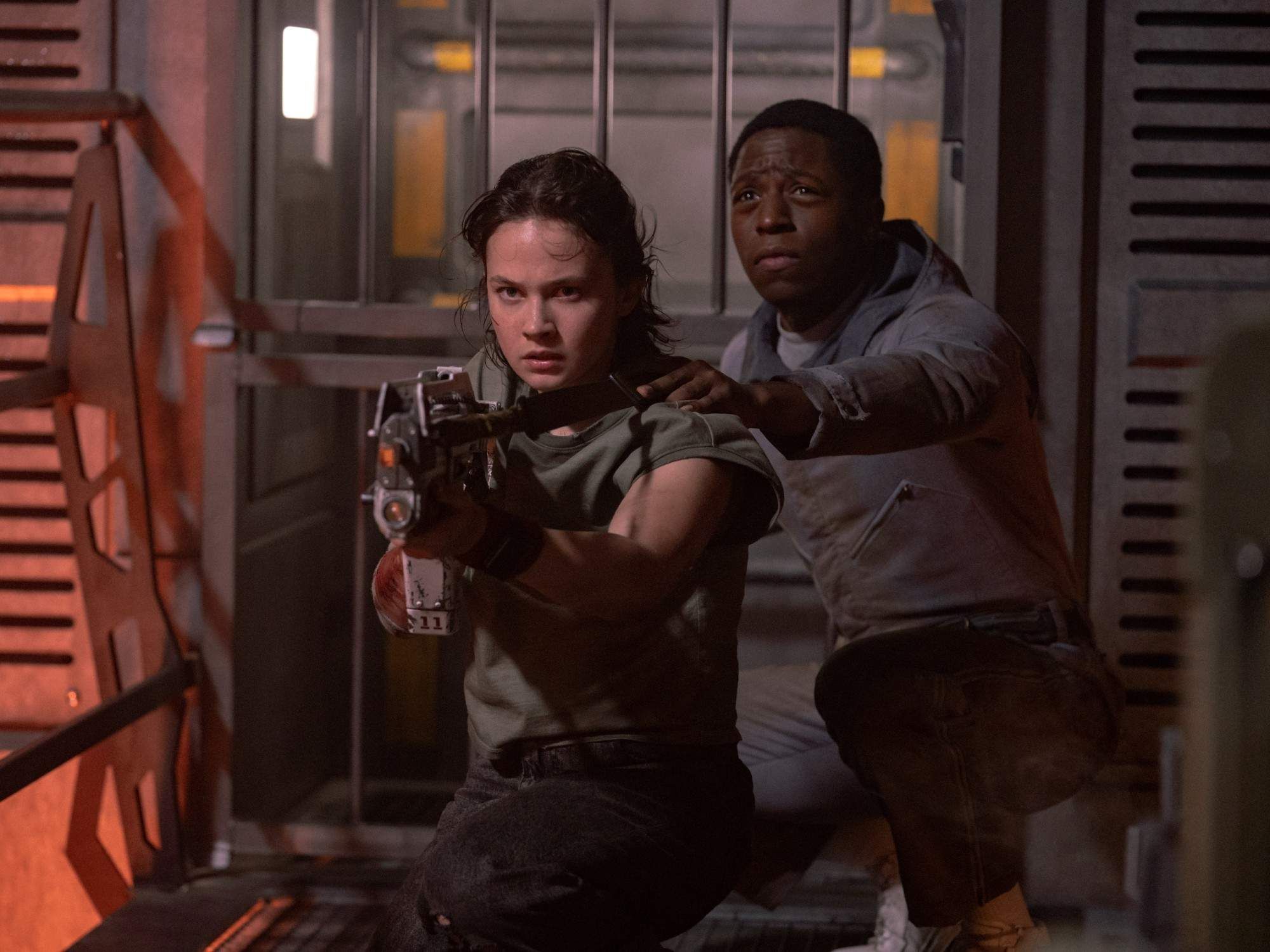Movie Review
Alien: Romulus brings back the true horror of the original film

Cailee Spaeny and David Jonsson in Alien: Romulus.
The Alien franchise has turned out to be one of the most durable and malleable ones in movie history, with 2024 marking the 45th anniversary of the original 1979 film. Over the years it has been taken in different directions by a variety of filmmakers, including two ill-fated Alien vs. Predator spinoffs. With the latest film, Alien: Romulus, the series has returned to its true horror roots.
Taking place between the events depicted in Alien and Aliens, it centers on Rain Carradine (Cailee Spaeny), who lives on a remote mining colony in deep space. Desperate to get away from a place where the sun literally doesn’t shine, she takes up an offer from her group of friends – Tyler (Archie Renaux), Kay (Isabela Merced), Bjorn (Spike Fearn), and Navarro (Aileen Wu) – to go to a decommissioned space station orbiting their planet, where they hope to find cryo chambers that will allow them to travel far away from home.
With the help of Rain’s “brother” – a synthetic being she’s nicknamed Andy (David Jonsson) – the group is able to infiltrate the dual-sided station, but soon discover that certain creatures are also on board. What follows is a dreadful cat-and-mouse game, with the group trying to evade the aliens at all costs, something that proves difficult due to their numbers and ability to quickly evolve.
Directed and co-written by Fede Alvarez, best known for horror films like Evil Dead (2013) and Don’t Breathe, the film is the most effective one in the series, from a pure horror aspect, since Aliens. While all of the non-spinoff films have relied on the terror that the aliens known as Xenomorphs bring, other filmmakers have chosen to either focus on other things or didn’t showcase them effectively.
Not so with Alvarez, who uses the claustrophobic confines of the ship to aid in the classic horror film structure. Having the group consist of 20-somethings gives viewers the familiarity of many earthbound scary films, as does that group featuring different personalities who often make questionable decisions. Additionally, the intensity and scale of the face-huggers and Xenomorphs, not to mention a good amount of gore, ups the fear factor exponentially.
Alvarez uses some clever storytelling devices – a faulty gravity sensor, the corrosiveness of the aliens’ blood – to add in some extra suspense. He also throws in a few references that pay tribute to the original films while still giving Romulus its own flavor, although one decision may prove to be a step too far for longtime fans. With the help of de-aging technology, an original character plays a key part in the film, although there doesn’t seem to be a legitimate reason for shoehorning that person into this particular story.
Spaeny is on a hot streak following her strong performances in Priscilla and Civil War, and she proves once again that her skills are adaptable to multiple genres. Jonsson nearly steals the film despite the fact that Andy speaks in a monotone. He gives the character a ton of nuance, making him into someone who’s alternately pitiable and abhorrent. The rest of the cast is solid, especially Merced, who still looks like Dora but delivers a mature performance.
Alien: Romulus makes the case that the franchise can continue indefinitely as long as it’s paired with filmmakers who know how to bring out the best in their casts and the well-known aliens. The series succeeds the most when horror is the focus, and this film has it in spades.
---
Alien: Romulus opens in theaters on August 16.
